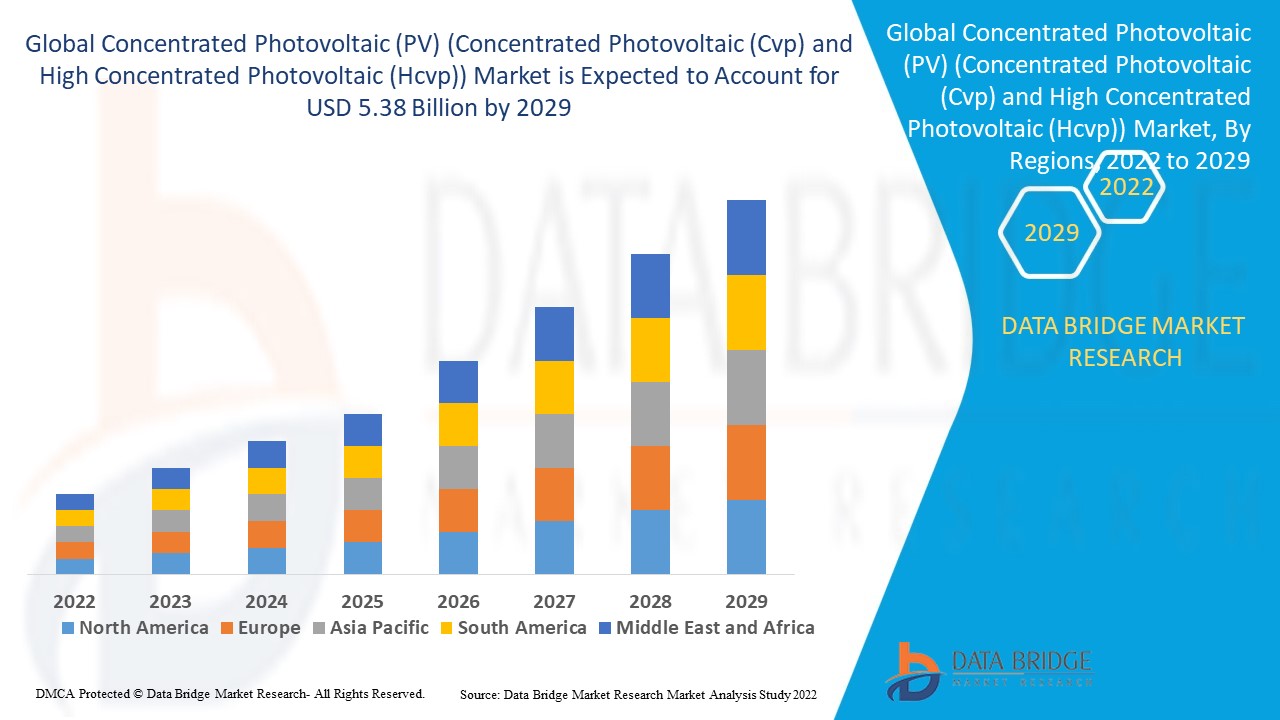Introduction
As the world shifts toward cleaner energy sources, the solar power industry continues to innovate, and one of the most promising advancements is concentrated photovoltaic (CPV) technology. CPV systems utilize lenses or mirrors to concentrate sunlight onto high-efficiency solar cells, maximizing power output from a smaller surface area. This market includes two primary technologies—Concentrated Photovoltaic (CVP) and High Concentrated Photovoltaic (HCPV)—each offering unique advantages in energy generation, particularly in high-irradiance regions. This article explores the current state, key drivers, segmentation, regional outlook, challenges, and future trends in the CPV market.
Market Overview
The Concentrated Photovoltaic (PV) (Concentrated Photovoltaic (Cvp) and High Concentrated Photovoltaic (Hcvp)) Market is witnessing growing interest as energy efficiency becomes a critical priority worldwide. In contrast to conventional photovoltaic panels, CPV systems achieve higher conversion efficiencies by focusing sunlight onto multi-junction solar cells. CVP systems typically offer 2-100 suns concentration, while HCPV systems go beyond 100 suns, delivering conversion efficiencies exceeding 40%. This makes CPV especially beneficial for utility-scale projects in regions with direct normal irradiance (DNI) like the Middle East, North Africa, the southwestern United States, and parts of Australia and India. The global CPV market is expected to grow steadily, driven by technology improvements and policy support for renewable energy deployment.
Key Market Drivers
Rising Demand for High-Efficiency Solar Technologies
Governments and utilities are increasingly focused on achieving more energy from limited land and resources. CPV systems provide a viable solution, particularly in land-constrained regions or where maximizing energy yield per square meter is essential. Their high-efficiency output makes them attractive for meeting renewable energy targets and reducing reliance on fossil fuels.
Favorable Climate Conditions in Developing Economies
Countries with high levels of DNI are ideal for CPV installations. Emerging economies in Asia, the Middle East, and Africa are investing in CPV to capitalize on their solar potential. The technology’s ability to perform well in extreme heat and arid conditions also adds to its appeal in these geographies.
Declining Cost of Multi-Junction Solar Cells
While historically expensive, the cost of multi-junction solar cells—critical to CPV systems—is gradually decreasing due to advancements in semiconductor manufacturing and economies of scale. This trend is helping CPV become more cost-competitive with other solar technologies.
Supportive Government Policies
Subsidies, feed-in tariffs, and renewable energy targets are encouraging the deployment of advanced solar technologies, including CPV. Incentives for high-efficiency and land-use-efficient solar projects make CPV an increasingly attractive option for utility companies and project developers.
Market Segmentation
By Technology
Low Concentrated Photovoltaic (LCPV): These systems use simple optical components with concentration ratios below 100 suns and are often easier to maintain.
High Concentrated Photovoltaic (HCPV): HCPV systems use precision optics and tracking systems to achieve higher efficiency and are primarily used in large-scale solar farms.
By Application
Utility-Scale Power Plants: The largest market segment, driven by the need for high-output solar generation and optimized land use.
Commercial Installations: CPV can provide efficient solar solutions for businesses with large rooftops or available land in sunny regions.
Remote Power Generation: Ideal for off-grid and rural areas where maximizing solar power output is critical and grid access is limited.
By Concentration Level
Less than 100x (LCPV)
Greater than 100x (HCPV)
Regional Insights
North America
The United States leads in CPV deployment due to government support, technological innovation, and high solar potential in the southwestern states. Several pilot projects have proven CPV’s feasibility, and interest is growing in HCPV for utility-scale use.
Europe
While the region favors conventional PV due to its cloudy climate, southern European countries like Spain, Portugal, and Italy have shown interest in CPV for solar farms in high-sun regions. EU goals for carbon neutrality could support increased investment in high-efficiency solar technologies.
Asia-Pacific
This region is experiencing rapid CPV adoption, particularly in India and China. India’s aggressive renewable energy goals and high solar irradiance make it an ideal market for CPV. Australia is also emerging as a key region due to its vast sunny landscapes and focus on decentralized energy generation.
Middle East and Africa
These regions offer ideal conditions for CPV deployment due to consistently high DNI and growing demand for renewable energy. Countries like Saudi Arabia and the UAE are investing in HCPV as part of their long-term energy diversification strategies.
Latin America
Brazil, Chile, and Mexico are exploring CPV to complement their expanding solar power programs. Chile’s Atacama Desert, with one of the highest DNI levels globally, is particularly well-suited for HCPV systems.
Technological Advancements
Dual-Axis Tracking Systems
Modern CPV systems use dual-axis solar trackers to follow the sun throughout the day, significantly increasing energy output. These tracking systems have become more reliable and cost-effective, reducing the levelized cost of electricity (LCOE) for CPV.
Advanced Cooling Solutions
To maintain performance under high solar concentration, CPV modules are being developed with improved thermal management, including passive and active cooling methods. These innovations help preserve cell efficiency and extend equipment life.
Modular System Designs
Manufacturers are offering modular CPV units that can be easily scaled up, facilitating deployment across diverse project sizes. This approach reduces installation complexity and enhances system flexibility.
Smart Grid Integration
As CPV is adopted in grid-connected systems, integration with smart grid technologies is becoming more common. This includes remote monitoring, performance analytics, and automated maintenance alerts.
Market Challenges
High Initial Cost
Despite declining component costs, the upfront capital required for CPV systems—especially HCPV—remains higher than conventional PV, limiting adoption in budget-sensitive markets.
Complex Installation and Maintenance
CPV systems require precise alignment, sun tracking, and regular maintenance, particularly for optical components and moving parts. This increases operational complexity and can affect system uptime.
Limited Awareness and Experience
Compared to traditional PV, CPV is less widely understood, and project developers often lack experience with its installation and performance optimization. Education and demonstration projects are needed to build confidence in the technology.
Geographic Limitations
CPV is most effective in regions with consistent, direct sunlight. In areas with frequent cloud cover or diffuse sunlight, its performance advantage over conventional PV diminishes, restricting its global applicability.
Future Outlook
The CPV market is poised for significant growth as technology becomes more accessible and cost-competitive. Strategic partnerships between technology developers, governments, and energy providers will play a vital role in scaling up deployment. As solar becomes a mainstream energy source, CPV’s higher efficiency and land-use advantages will become more attractive, particularly in utility-scale and off-grid applications. Innovations in optics, materials, and AI-powered tracking systems will further enhance performance and reduce costs, positioning CPV as a key player in the global renewable energy transition.
Source: https://www.databridgemarketresearch.com/reports/global-concentrated-pv-cell-cvp-and-hcvp-market
Conclusion
The Concentrated Photovoltaic (CVP and HCPV) Market is evolving as a high-potential segment of the solar energy landscape. While it faces some deployment challenges, its ability to deliver superior efficiency, particularly in sun-rich regions, gives it a competitive edge in specific applications. With ongoing technological advancements, policy support, and environmental imperatives, CPV systems are expected to play a growing role in the global effort to decarbonize energy generation and build a sustainable future.



